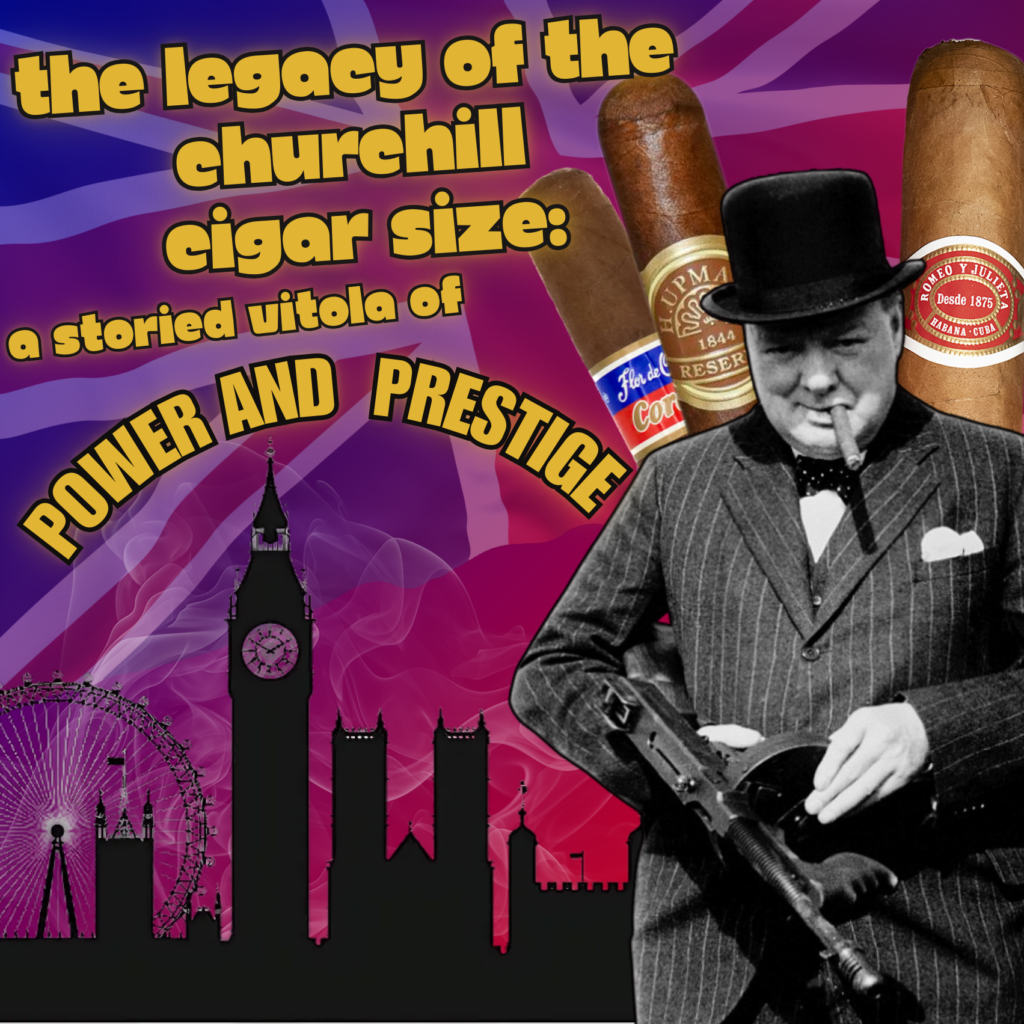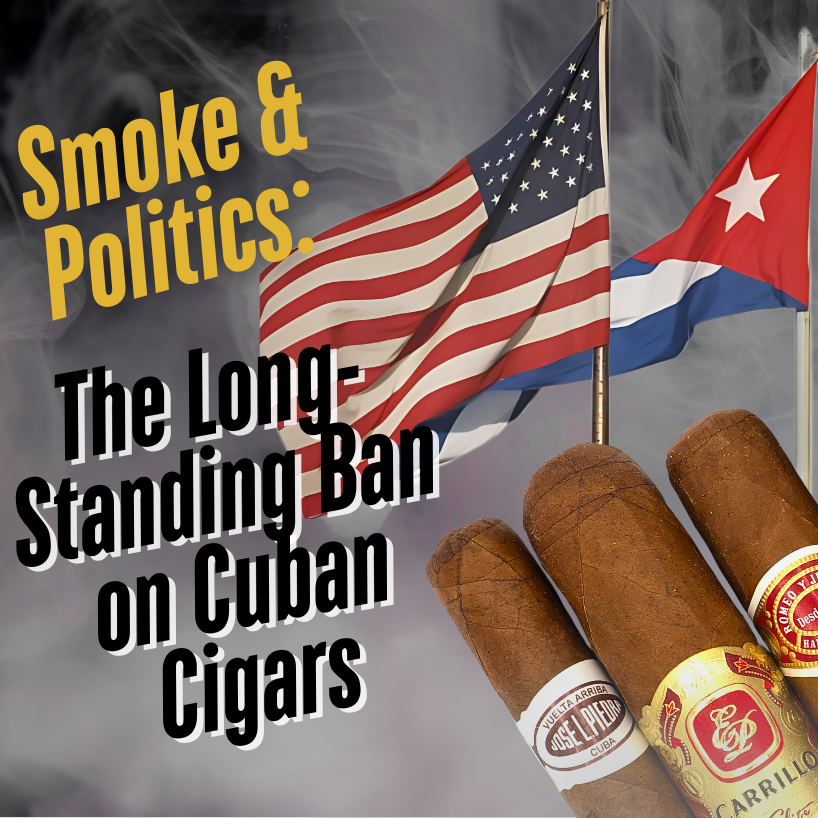Most cigar smokers remove the band at some point during the smoke — usually after the cigar has warmed and loosened the adhesive. It’s a small, familiar ritual, but few ever stop to ask why the band is there at all.
The cigar band wasn’t always part of the smoking experience. It was introduced for practical reasons, long before branding and collectability became part of cigar culture. Over time, this simple strip of paper evolved from a basic protection tool into a canvas for storytelling, tradition, and even authenticity.
Here’s the real history behind cigar bands — and why they remain an essential part of the cigar world today.
A Royal Legend (and a More Likely Reality)
One of the oldest legends traces the origin of cigar bands back to Catherine the Great of Russia. According to the story, the Empress grew tired of tobacco oils staining her elegant white gloves, so she ordered that her cigars be wrapped with paper bands to protect her hands.
It’s a good story — but most historians believe cigar bands really appeared much later, during the mid-19th century in Europe. As cigars became more widely produced and exported, manufacturers needed a simple way to identify their products on crowded shelves. With hand-rolled cigars often looking identical, paper bands became a practical and inexpensive solution for branding.
Whatever the true origin, one thing is clear: the cigar band was born out of a need for both protection and marketing.
A Practical Tool for Smokers
In the early days of cigar smoking, shops weren’t as clean or controlled as today’s humidors. Customers often handled multiple cigars before making a choice, and dirty or oily hands could easily ruin the delicate outer wrapper of a cigar.
The band acted as a shield. It helped keep oils, dirt, and damage away from the most fragile part of the cigar. In some cases, the band also helped secure the wrapper leaf itself, preventing it from unravelling during transport or handling.
Before it became an art form, the cigar band was simply a tool to preserve the quality of the smoke.
Branding Before Branding Was Cool
By the late 1800s, cigar makers realized that these little paper rings could do more than just protect cigars — they could sell cigars.
Bands became miniature advertisements, showcasing intricate artwork, crests, gold embossing, and hand-painted scenes. A good band could signal quality, tradition, or luxury at a glance. For cigars being shipped across continents, a recognizable band helped customers pick out their favourite blends instantly, even through layers of customs packaging.
In many ways, cigar bands were an early form of mass-market branding — long before logos and marketing agencies took over the business world.
Cigar Bands and Collectability
As bands grew more decorative and detailed, many smokers began saving them. Although cigars never adopted the “insert card” marketing tricks seen with cigarettes in the early 20th century, cigar bands themselves became objects of interest.
Today, some cigar enthusiasts collect bands from memorable smokes or limited-edition releases. Unique designs, anniversary editions, and collaborations with artists have made cigar bands small keepsakes tied to specific moments and memories — even if full-blown collectability isn’t as widespread as it is with other tobacco products.
Battling Counterfeits
As cigars grew into a luxury item, counterfeiters followed. Unscrupulous sellers would pass off cheap cigars as premium brands by copying the look — but often failed to replicate the band.
Today, premium cigar makers use bands as part of their anti-counterfeit strategies. Features like holographic foils, microprinting, detailed embossing, and unique serial numbers help customers verify the authenticity of their purchase.
More Than Decoration: Telling the Brand’s Story
Modern cigar bands are about more than just authenticity. They’re about storytelling.
A single glance at a cigar band can tell you about the brand’s history, its country of origin, its blend, or its philosophy. Some bands pay homage to the farms where the tobacco was grown; others celebrate anniversaries, festivals, or collaborations with artists and musicians.
Seasonal and themed releases have also become popular. Brands often create limited-edition bands for events like Valentine’s Day, harvest festivals, or national celebrations — making every smoke feel a little more personal.
Innovations and Challenges in the Modern Era
Today, it’s common to see cigars with double bands.
- Some feature a main brand logo plus a second band highlighting a special series, vintage year, or factory edition.
- Others use a decorative foot band — a smaller ring near the foot of the cigar that is removed before smoking — often used for limited releases or to protect the wrapper during handling.
However, not all bands reach smokers exactly as the manufacturer intended.
In certain countries with strict tobacco laws, cigars are forced to carry generic government warning bands.
- Sometimes these bands are added alongside the original band.
- Other times, they completely replace the manufacturer’s band, covering up the original design with plain, standardized warnings about health risks.
This can strip away some of the artistry and branding that cigar makers work so hard to create.
Conclusion
Cigar bands may seem like a small detail, but they carry a big story.
What started as a simple strip of protective paper has become a symbol of branding, authenticity, collectability, and tradition. The next time you remove a band before lighting up, take a moment to look a little closer. There’s a lot more history in that small ring than meets the eye — and it’s still shaping the way we experience cigars today.









